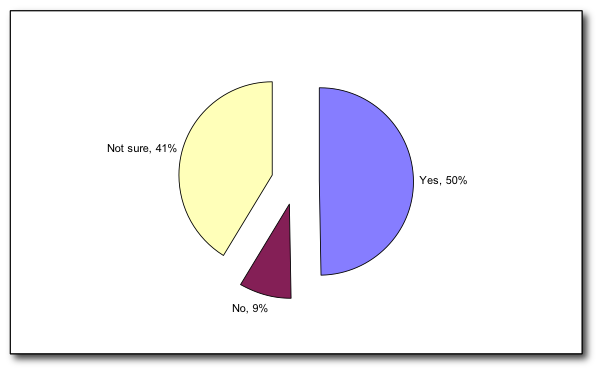You are viewing our site as an Agent, Switch Your View:
Agent | Broker Reset Filters to Default Back to ListKeys to Technology Adoption: Part 1
October 04 2011
 We're pleased to bring you this white paper from Michael Audet of the WAV Group. We'll be releasing the white paper in a series, so stay tuned for the next 3 installments.
We're pleased to bring you this white paper from Michael Audet of the WAV Group. We'll be releasing the white paper in a series, so stay tuned for the next 3 installments.
Anybody that understands our industry knows the average broker and agent hate to change the way they do things. The idea of change creates questions and insecurity. We all get comfortable with our old familiar ways. The idea of having to learn something new, like a new technology, is not very attractive. “If it ain’t broke why fix it”, as the saying goes. But what if it is broke? Or, what if there are just really much better ways to do things or technologies that really do improve our business? How do we get people to use them and when does real adoption take place?
Change is difficult everywhere, but our industry, for a number of reasons, is even slower than others to adopt new technology. We are an industry of independent contractors working together in an atmosphere of controlled competition. Only a small percentage of agents in our industry are highly successful. Money is tight and the real estate market has contracted so it isn’t surprising that getting people to adopt anything new including technology is a significant challenge. Software companies that really understand how people use and adopt technology today are adjusting. We are seeing new approaches of innovation and not just incrementalism. We believe there are technology innovators emerging that understand the dynamics of our industry,the psychology of adoption and how the rules have changed!
In our last paper we looked at the “Shift in Real Estate Technology” and how the broker needs to invest in enterprise solutions and be at the center of the broker/agent/consumer technology experience. We looked at the pressures driving this shift and why this is a great opportunity for brokers to reinvent themselves with their agents as well as an opportunity for them to reduce infrastructure and expenses. This is all true but as we pointed out in that paper, introducing the right technology is just the first step.
 Real technology success only occurs with adoption and use. Success leaves clues, as does failure. In this paper we want to look at what is working today as well as what hasn’t because we believe it shows us some of the “keys to adoption” for today’s technology. Software companies and organizations that understand these keys will move forward while companies that are still delivering technology according to keys that worked even a few years ago will be left behind. The race is on and the rules have changed again!
Real technology success only occurs with adoption and use. Success leaves clues, as does failure. In this paper we want to look at what is working today as well as what hasn’t because we believe it shows us some of the “keys to adoption” for today’s technology. Software companies and organizations that understand these keys will move forward while companies that are still delivering technology according to keys that worked even a few years ago will be left behind. The race is on and the rules have changed again!
Pressure Causes Change But Not Adoption
In our last white paper we talked about the pressures causing the “Shift in Real Estate Technology” that is moving our industry from an MLS centric world to a broker centric technology world. We looked at real pressures that include the need for agents to have better data access, integration and the ability to move beyond MLS limitations while creating competitive differentiation. Real needs have created the pressure to implement software solutions to address these issues and most importantly, we have reached a “threshold of activation” that is causing change to occur.
That “shift” is a shift to greater integration, better sharing of data, and the ability to move data throughout a company’s business processes. What that means to brokers and agents is the end of adding the same data multiple times in multiple locations. It means actually having data from web services being used to track their return on investment in the back office. It means systems are actually working like systems, not just independent products.
Stress and pressure are necessary ingredients for that change to begin but they do not guarantee success will result even with that change. The key to that success, especially when looking at technology, is adoption!
Without adoption, technology is just overhead. We see this throughout our industry where MLSs, for example, offer dozens of products to members while only a very small percentage use them. We see it with brokers as well who adopt technology tools but then can’t get their agents to really use these products. The key is understanding the psychology of technology adoption and how much this has changed over the last few years for all of us. Products that are being designed without this in mind may be installed, but they will not be adopted!
The Psychology of Technology Adoption Like it or not, we live in a world where decisions to move towards or away from something happens in milliseconds. We have to be this way because we are inundated with too much data to absorb. We have to filter out 95% of what comes at us very quickly just to manage our day-to-day activities. Like junk mail filters we evaluate incoming data, whether it is from TV, news, the computer or real life, in seconds and we engage or ignore.
Like it or not, we live in a world where decisions to move towards or away from something happens in milliseconds. We have to be this way because we are inundated with too much data to absorb. We have to filter out 95% of what comes at us very quickly just to manage our day-to-day activities. Like junk mail filters we evaluate incoming data, whether it is from TV, news, the computer or real life, in seconds and we engage or ignore.
This same filtering process occurs with technology. We are used to going online, without training, and navigating our way to whatever we need. If we don’t find what we want quickly or a process is too complicated we move on. The window of opportunity for engagement is short. And, once we have abandoned one path we usually don’t go back because we have an impression or evaluation already in place. Time is short so we don’t give too many second chances. What this means for technology is pretty obvious. It better engage quickly and provide some real benefits or it will be passed by.
When software is mandatory, like MLS systems, vendors can get away with more than when a product is discretionary. If you have to use a system you will endure a training class and you will learn to use it. But, when an individual decides whether they are going to use a product or not, it is a different story.
Some of the keys that need to be present were covered in some detail in our last white paper, “The Shift in Real Estate Technology”. We looked at how real estate technology is shifting from an MLS centric model to a more broker centric model and the pressures that are causing that to happen. Specific pressures we noted that are driving real estate companies to implement enterprise level systems include:
- Anything you install for agents has to be easy to use or it won’t be adopted.
- There is a need for “connectivity” throughout every real estate business.
- There is a need for data access throughout the enterprise, both from within the business and from outside.
While these are pressures, doing them successfully are also “keys for adoption”.
 To see this in action let’s start our discussion with things we know didn’t work very well. Transaction Management is a great case study to look at in this regard.
To see this in action let’s start our discussion with things we know didn’t work very well. Transaction Management is a great case study to look at in this regard.
In 2005 WAV Group published a study called the “2005 Transaction Management Adoption Study”. We did this study because everybody was talking about how great Transaction Management products were in 2005 but when we looked around we didn’t see very many people using them, even when it was provided free by their MLS or brokers. We wanted to understand why.
It was an interesting project because if you asked brokers and agents if they thought Transaction Management software was a good idea almost everyone said, yes, it was. If you asked them if they intended to use it in the future, many also said, yes, they did. But in actuality, what they said and what they did were two different things, why?
The reason is actually pretty obvious if you look at these two charts from the 2005 study. In the first we asked:
Are you interested in using an automated Transaction Management system in the future?
As you can see, 50% said they were interested, which is really a high number. If you are selling software in a sector where 50% of the people say they want to use it you should be off to a great start. So what happened? We see the answer in the following question and it is one of the “Keys to Adoption”.
How satisfied are you with the method you currently use to manage transactions?
In 2005, 79% of the agents reported that they were either very satisfied or somewhat satisfied with the method they were using at the time. So while in concept the idea of Transaction Management seemed like a good idea to them, there was no real pressure to change. The result? No real adoption.
The final straw in this equation that we discovered was the lack of perceived upside. Not only were there the noted issues of no pressure to change and the obstacle of a high implementation and learning curve, the products did not produce a real upside that most could see. It didn’t shorten the sales cycle and it didn’t make agents more money. The end result was a perfect storm where adoption was doomed from the beginning!
Looking at the flip side for examples of successful tools and adoption, we discussed some of these in our last white paper. We looked at CoreLogic’s enterprise level software, Agent Achieve, implemented by Prudential California Realty for all of their agents was and saw it was getting broad use. How did that differ from our example above?
- Agents had real needs that weren’t being met. They had a “pain”!
- It was rolled out in a way that was simple and easy to learn. It provided quick benefits.
- The tools shortened the time it took to perform a task. There was obvious upside.
- The tools allowed agents to reach more prospects, which means more earnings potential. Again, this is an obvious upside.
One functional example sited by Prudential California Realty of this in action was the introduction of enterprise level marketing tools. With the enterprise system the company was able to create attractive marketing flyers that agents could use immediately with no fuss or muss. The benefits were clear, the process was easy and it replaced a process they didn’t like, creating brochures on their own!
But there are more keys to successful adoption, and as we mentioned earlier, the rules are changing. Let’s explore what we believe are some of the keys for successful technology adoption in 2011.
If you can't wait for the next installment, you can download the full white paper here.









